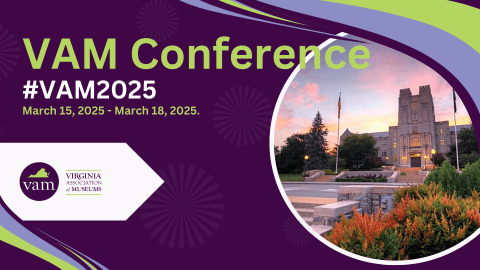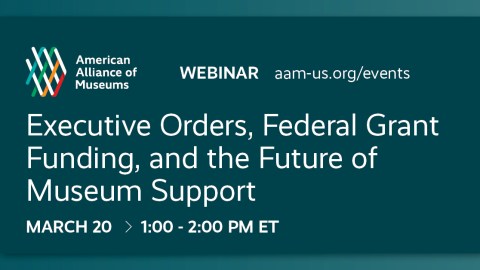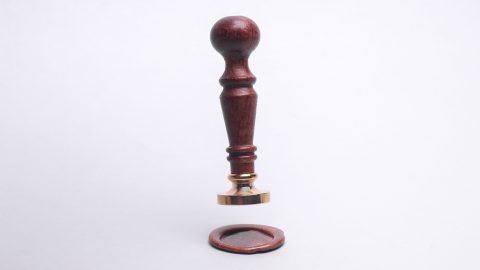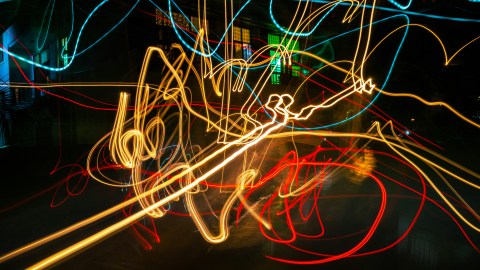
This article originally appeared in Museum magazine’s March/April 2024 issue, a benefit of AAM membership.
The USC Pacific Asia Museum took a trust-building approach to working with docents on an evolving education program for student tours.
On a typical Wednesday morning at the USC Pacific Asia Museum (USC PAM), as you walk into the building’s Imperial Palace–style courtyard filled with plants, Taihu rocks, and a koi pond, you might see a group of students gathered with a docent. The docent asks the students to share what they see, if they are reminded of anything familiar, and how being in the space makes their bodies feel. They discuss museum expectations and what they will learn during their visit, and then they slowly make their way into the galleries to begin exploring.
USC PAM, which recently celebrated its 50th anniversary, is a small museum in Pasadena, California, dedicated to the art of Asia and the Pacific Islands. The historic building that houses the museum celebrated its centennial this year. Part of the University of Southern California, USC PAM is often described as a hidden gem in the city. With 19 full-time staff members and more than 150 volunteers, the museum serves a diverse audience that is local to both its San Gabriel Valley neighborhood and greater Southern California. Its programs range from school tours and family days to large-scale cultural festivals and events.
Volunteer docents serve a vital role at USC PAM. They lead tours for K–12 students as part of the School Tours and Distance Learning programs. They are critical to advancing the museum’s mission of creating inspiring encounters with the art, history, and culture of Pacific Asia to promote intercultural understanding. There are currently 65 docents on the museum’s roster, with 33 actively leading tours for student and adult groups. Their history with the museum dates to its early days when the docent council was essentially the education department. Their love for the museum’s art and building has endured for decades, through several administrative and operational changes.
In the past decade, since the museum was acquired by the university, the docent council has embraced dramatic changes once thought impossible. At a time when many museums are shifting the leadership of their education programs from volunteer docents to paid educators, USC PAM has retained and evolved its docent organization by establishing trust between docents and education staff and empowering docents to be active stakeholders in our collective work.
Our Strategy for Change
We view our docents as instrumental to the education department and thus choose to invest time and resources in improving the quality of their service and experience. Whenever a change is approaching, no matter the scale, docents are included in the conversation. The education team attends every docent board and council meeting, always offering to assist with any major or minor need or concern. Our strategy for fostering this relationship comprises four components: review, collaboration, assessment, and reflection.
We approach each change in museum education by reviewing the current situation. What works and what doesn’t work with the way things are currently? As we undertake this analysis, we think about our goals and objectives for implementing the new structure or process.
For example, during the onset of the pandemic, like many other museums, we pivoted our popular K–12 field trip program to a virtual format (USC PAM Distance Learning Program). Our docents worked with me and the school programs coordinator to learn several new skills, including navigating virtual platforms, modifying content for accessibility, developing virtual activities, and more. The biggest shift was the implementation of thematic tours based on grade levels, something most museums were already doing at the time. However, our docents chose not to switch to thematic tours before the uncontrollable circumstance of a global pandemic, instead favoring a format in which each docent could talk about whatever they wanted.
Once we began making plans to reopen the galleries, we knew that docent-led tours for students could not return to the way they were. With no set themes, groups of students on the same field trip would get a completely different experience depending on who was giving the tour. We reviewed the data from pre-pandemic teacher surveys and consulted current teachers to understand what they were looking for in an in-person field trip program. Teachers expressed a desire for a more interactive experience, with less lecturing and more activities to foster deeper connections with objects and historical content.
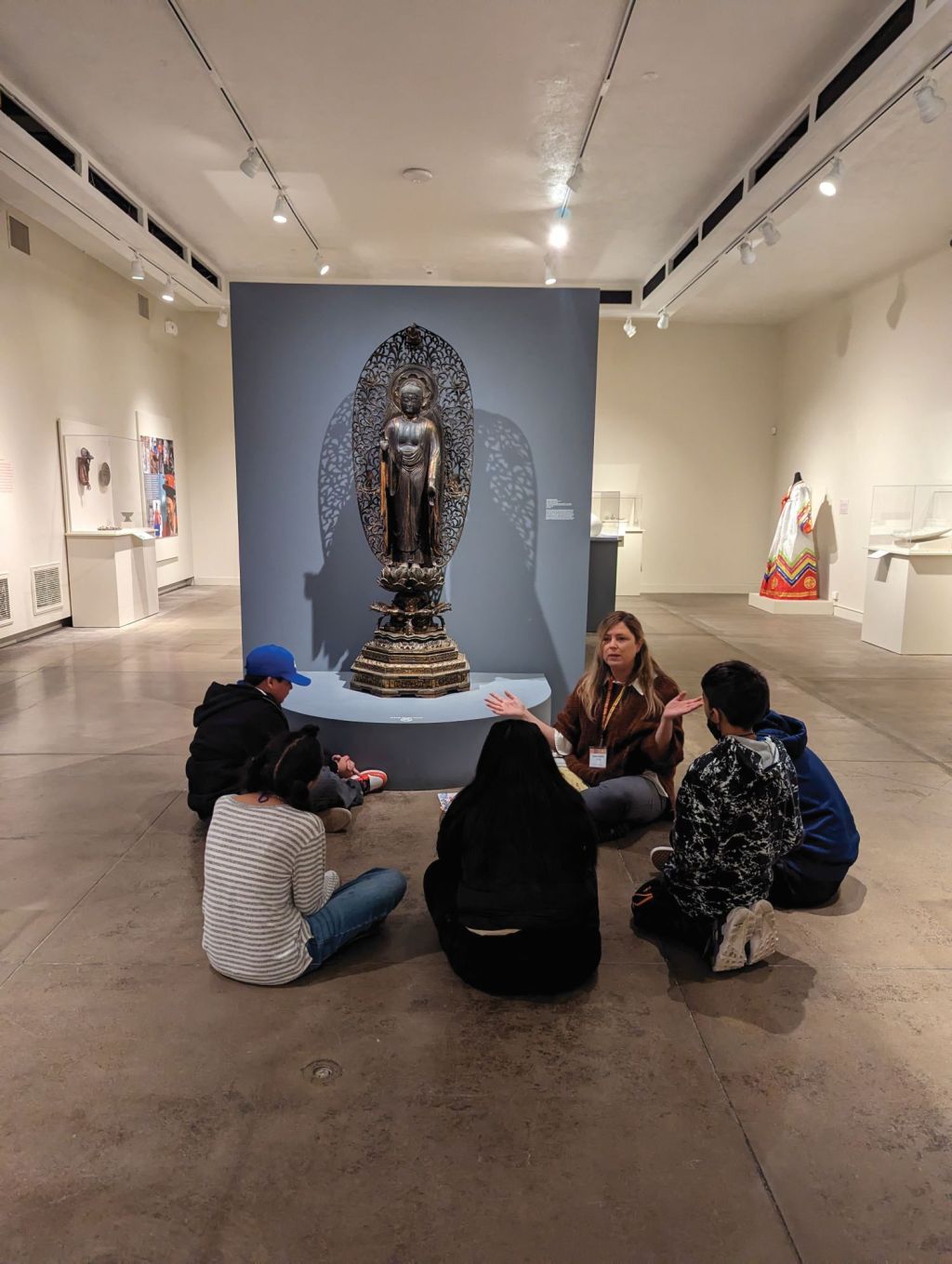
Armed with this information, we set a goal to prepare our docents to confidently lead engaging, interactive thematic tours of our permanent collection and special exhibitions. Within the themes we developed—animals in Asian art (grades K–2), nature in Asian art (grades 3–5), the Silk Road (grades 6–8), and contemporary Asian art (grades 9–12)—docents can choose the tours’ objects and activities, leaving them some creative freedom in how they lead their tour. The program focused on students learning about Asian and Pacific cultures through discussion of artistic practices, materials, and themes while making personal connections to the themes through reflection on experiences and prior knowledge.
Subsequently, we collaborated with the docents on developing their new training for in-person tours. In a series of meetings with staff, active docents shared their thoughts, experiences, and advice on effectively presenting this new tour format to the group. One of the key takeaways from the meetings was that docents wanted to understand the reasons behind the changes. With that in mind, our training included explanations outlining the shift to thematic touring, grounded in best practices and successes at other institutions. We also shared the teacher surveys that underscored the need for cohesion in the content their students received at the museum.
Once docents began touring students in-person again, we began assessing the program by collecting more survey data from teachers. We asked docents who had not participated in the Distance Learning Program to shadow an experienced docent before scheduling them to tour. Experienced docents often offered advice and moral support to their colleagues who were nervous about trying this new format. Education staff supported the docents by providing feedback on their work and brainstorming solutions for challenging situations. After each day’s tours, docents reflected on successes, challenges, and ideas for improvement.
Subsequent training meetings included dedicated time for reflection and sharing feedback and experiences with the new format. These conversations confirmed the success of thematic tours with docents telling us they had become comfortable trying new things, experimenting with activities, and sharing strategies with one another.
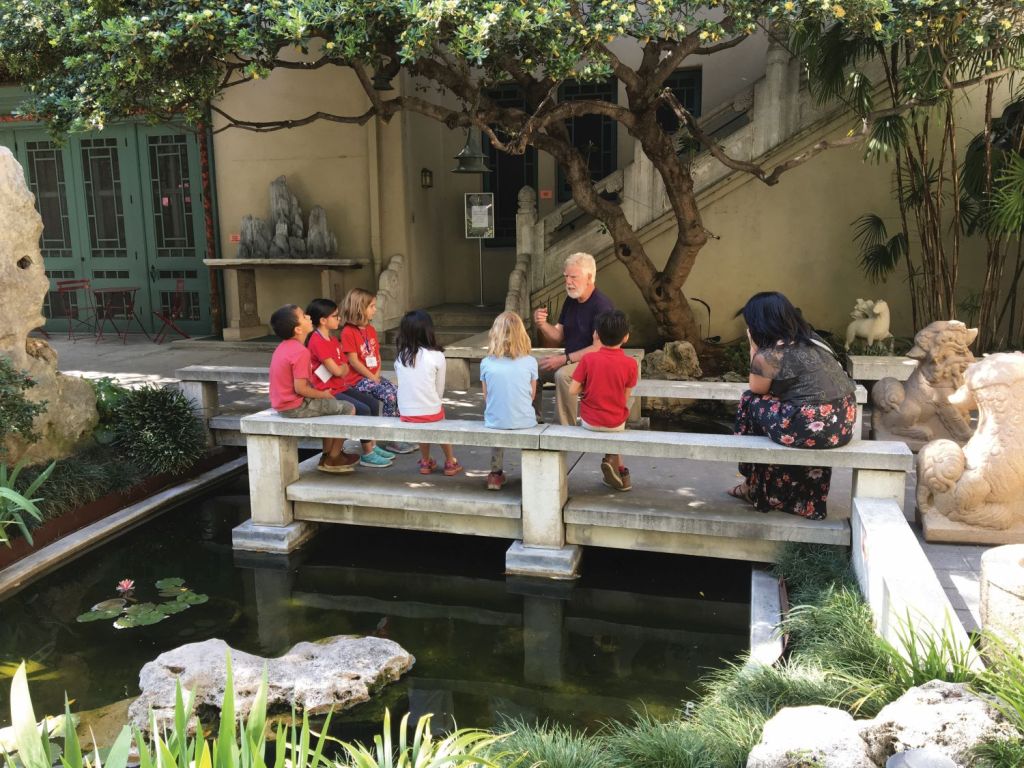
Focusing on Trust
Of course, this change was not unanimously embraced, and several docents stopped doing in-person tours with students. Some opted to contribute to the docent council and the museum by participating in special committees that utilized their talents for event planning, content research, and documentation. This resulted in a period during which the task of leading tours fell on a smaller group of dedicated individuals, who by the end felt burned out. Before we could train a new class of docents, staff had to step in occasionally to lead tours when there were not enough docents who could do so.
Trust and relationship building emerged as integral to getting docents to accept and adapt to changes in the institution and its programs. The education department’s approach to this change in tours and other changes has involved listening to concerns, engaging in discussion, and collaborating on solutions accepted by most, if not all, members of the group. Involving interested docents in the planning for new programs and projects fostered a deeper connection with those activities and created advocates for the new ideas among the larger group.
Our trust-building strategy also helped us implement annual diversity, equity, access, and inclusion (DEAI) training for docents and shift to a training format that is more inclusive and accessible for new participants. Docents helped plan DEAI workshops by suggesting areas where they needed more resources, such as inclusive language and working with differently abled individuals, and by sharing real-life scenarios for exploration in the workshops. At one point, they formed a committee to explore topics of race and discrimination in the museum education field, revealing that biases are deeply rooted at nearly all levels of our beloved institutions.
After two years of annual DEAI workshops for the docent council, training committee members unanimously accepted including a DEAI workshop at the beginning of the new 12-week docent training. This workshop includes anti-bias training and information on inclusive language. Additional changes in the most recent training focused on the recruitment process, touring strategy workshops, and information sharing. Current docents modeled best practices to new recruits, sharing ideas for engaging experiential activities with modifications for different ages and ability levels.
Feedback from training participants indicated that the changes more positively affected their training experience compared to previous years. We also saw room for improvement in helping new docents gain confidence in inquiry- and object-based learning techniques.
Our docents work at the museum because they love to learn and engage with a community that shares their interests. One longtime USC PAM docent, Nancy Lan, a scientist by trade, has enjoyed making new friends with similar interests, appreciating art from different points of view, learning about Asian cultures beyond her native Chinese culture, engaging with curious children, and even improving her leadership skills. “I take every chance in my life, including being a docent, as an opportunity for learning, and adapting to change has been a part of that,” Lan says.
We hope that USC PAM docents continue to evolve with the changing institution. We envision the next round of docent training to be more diverse, inclusive, and accessible. By building relationships based on mutual trust and an understanding of motivations, museums can embrace their docents as a valuable resource and lead them through any changes and challenges.
Tips for Helping Docents Develop Engaging Activities
- Provide examples of age-appropriate activities and modifications specific to different artworks.
- Allow docents to brainstorm and practice ideas in groups.
- Encourage experimentation with students, followed by reflection and modification of the activity.
- Encourage docents to share successful activities with each other and include them in forthcoming training sessions.

